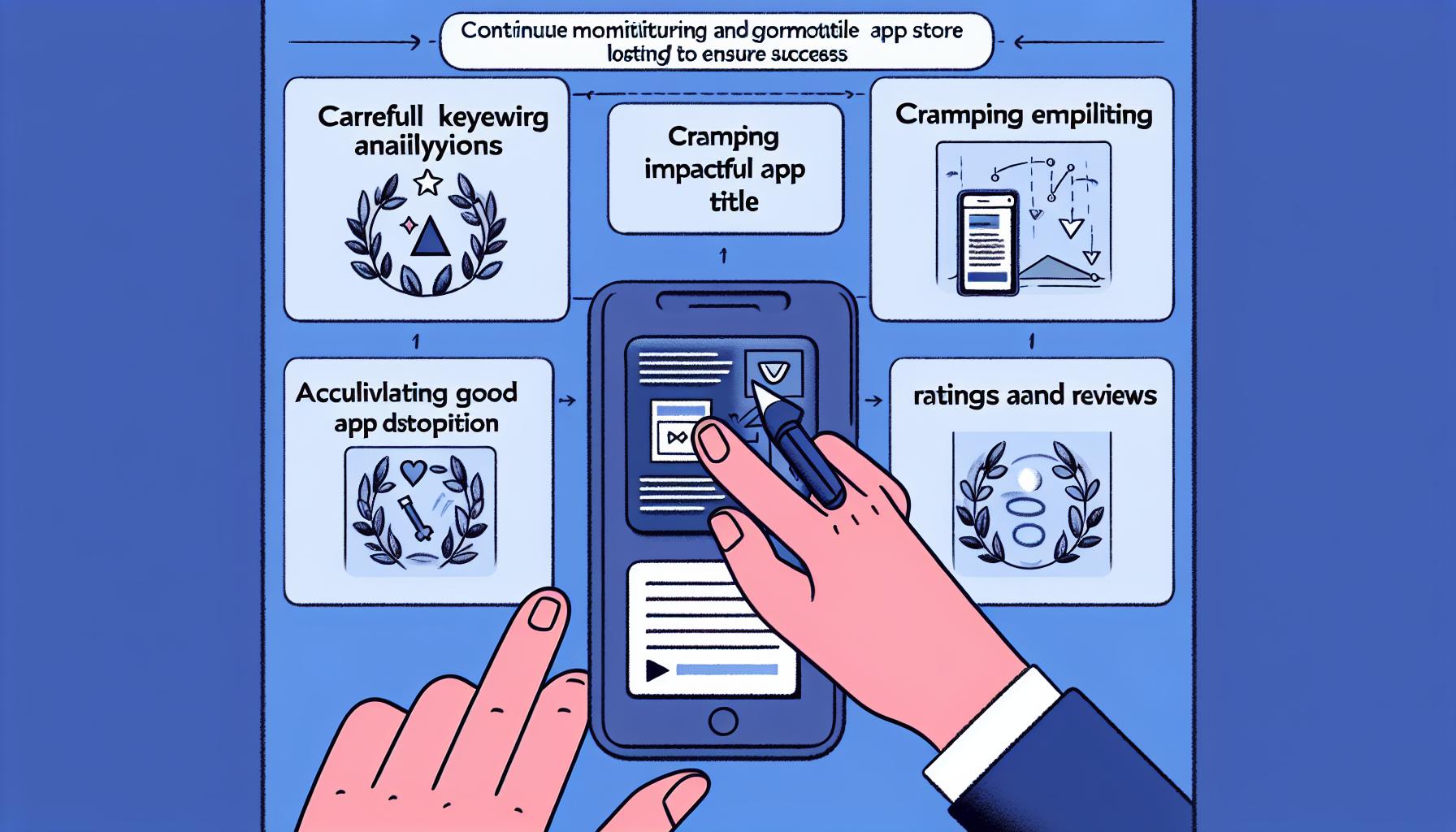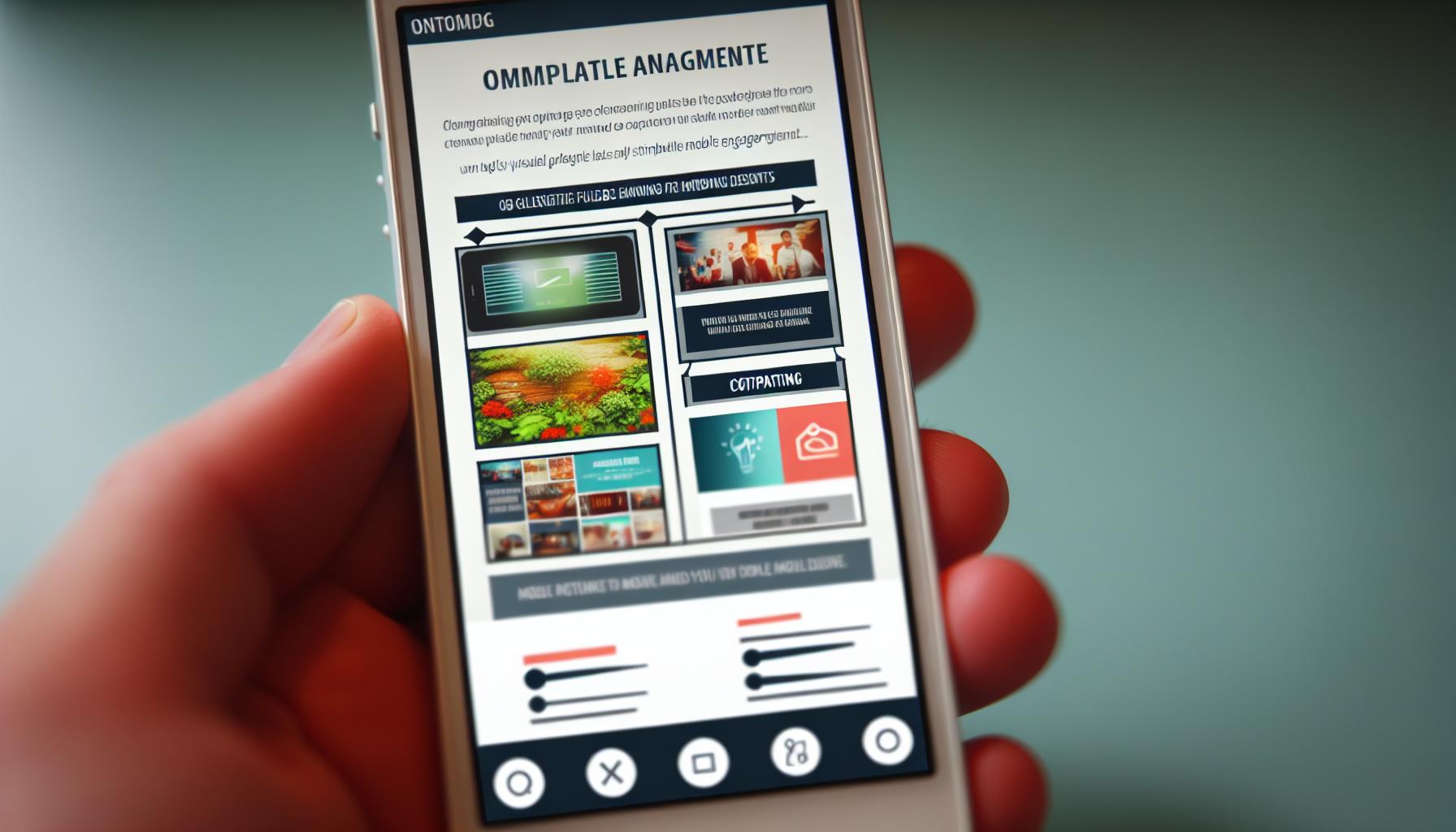4 min read
Designing for Mobile Optimization: A User-Centric Approach
Discover the key design strategies and principles for creating user-centric mobile experiences that prioritize optimization and engagement.
5 min read
![]() The Amazing Team at Focus Digital Marketing
:
Apr 5, 2024 9:00:00 AM
The Amazing Team at Focus Digital Marketing
:
Apr 5, 2024 9:00:00 AM
Mobile engagement can be maximized through the use of visuals and multimedia. In a world where attention spans are short, incorporating eye-catching images, videos, and infographics can help capture the interest of mobile users. Visual content is more likely to be shared on social media platforms, increasing the reach and engagement of your mobile content. By utilizing visuals and multimedia, you can create a more immersive and interactive experience for mobile users, keeping them engaged and interested in your content.
Furthermore, visuals and multimedia can help convey information more effectively on mobile devices. Mobile screens are smaller compared to desktop screens, making it important to present information in a concise and visually appealing manner. Infographics, for example, can simplify complex data and present it in a visually appealing format that is easy to understand on mobile devices. Videos can also be used to demonstrate products or provide tutorials, enhancing the user experience and increasing engagement.
To maximize mobile engagement through visuals and multimedia, it is important to optimize these elements for mobile viewing. Ensure that images and videos are properly sized and compressed to minimize loading times. Use responsive design techniques to ensure that visual content adapts to different screen sizes and orientations. By optimizing visuals and multimedia for mobile devices, you can create a seamless and engaging experience for mobile users.
Mobile optimization is essential in today's digital landscape. With the increasing use of smartphones and tablets, businesses need to ensure that their content is easily accessible and user-friendly on mobile devices. Failure to optimize content for mobile can result in a poor user experience, high bounce rates, and decreased engagement.
One of the key reasons why mobile optimization is important is the shift in consumer behavior. More and more people are using their mobile devices to browse the internet, search for information, and make purchases. In fact, mobile devices have surpassed desktops as the primary means of accessing the internet. This means that if your content is not optimized for mobile, you are missing out on a large portion of your target audience.
Mobile optimization also plays a role in search engine rankings. Search engines like Google prioritize mobile-friendly websites in their search results. This means that if your website is not optimized for mobile, it may not rank as high in search engine results pages, resulting in decreased visibility and organic traffic.
To understand the importance of mobile optimization, businesses should analyze their website analytics and user behavior. By identifying the percentage of mobile traffic, bounce rates, and conversion rates from mobile devices, businesses can gain insights into the impact of mobile optimization on their overall performance.
In conclusion, mobile optimization is crucial for businesses to succeed in today's digital age. By ensuring that your content is optimized for mobile devices, you can provide a seamless and user-friendly experience for mobile users, increase engagement, and improve your overall online performance.
Creating mobile-friendly content is essential for maximizing mobile engagement. Here are some key strategies to consider:
1. Responsive Design: Implement responsive design techniques to ensure that your content adapts to different screen sizes and orientations. This ensures a consistent and user-friendly experience across all devices.
2. Clear and Concise Formatting: Use short paragraphs, bullet points, and subheadings to break up your content and make it easier to read on mobile devices. Avoid long blocks of text that can be overwhelming on smaller screens.
3. Optimize Loading Times: Mobile users expect fast loading times. Compress images and videos, minimize the use of large files, and optimize your website's code to improve loading speeds.
4. Mobile-Friendly Navigation: Ensure that your website's navigation is easy to use on mobile devices. Use clear and intuitive menus, implement a search function, and make sure that buttons and links are large enough to be easily tapped with a finger.
5. Incorporate Mobile-Specific Features: Take advantage of mobile-specific features such as click-to-call buttons, location-based services, and mobile payment options. These features can enhance the user experience and increase engagement.
By implementing these key strategies, you can create mobile-friendly content that provides a seamless and engaging experience for mobile users, ultimately maximizing mobile engagement.
Visuals and multimedia play a crucial role in mobile engagement. By utilizing these elements effectively, businesses can capture the attention of mobile users and increase engagement. Here are some ways to utilize visuals and multimedia for mobile engagement:
1. Eye-Catching Images: Incorporate high-quality and visually appealing images that are relevant to your content. Images can help convey your message, evoke emotions, and make your content more visually appealing.
2. Engaging Videos: Create and share videos that are informative, entertaining, and relevant to your target audience. Videos can be used to demonstrate products, provide tutorials, or share behind-the-scenes content. They are highly shareable and can increase engagement on social media platforms.
3. Infographics and Data Visualizations: Use infographics and data visualizations to present complex information in a visually appealing and easy-to-understand format. Infographics can simplify data, statistics, and processes, making them more digestible on mobile devices.
4. Interactive Content: Incorporate interactive elements such as quizzes, polls, and surveys to engage mobile users. Interactive content encourages user participation and can lead to higher levels of engagement and sharing.
5. Live Streaming: Take advantage of live streaming platforms to engage with your audience in real-time. Live streaming can be used for product launches, Q&A sessions, interviews, and behind-the-scenes content.
By utilizing visuals and multimedia in your mobile content, you can create a more engaging and interactive experience for mobile users, ultimately increasing mobile engagement and driving business success.
Creating a responsive and user-friendly design is essential for mobile engagement. Here are some key considerations when designing for mobile:
1. Mobile-First Approach: Adopt a mobile-first approach when designing your website or app. This means prioritizing the mobile experience and designing for smaller screens first, then scaling up for larger screens.
2. Simple and Intuitive Navigation: Design a navigation system that is easy to use on mobile devices. Use clear labels, and intuitive icons, and minimize the number of steps required to access content or complete actions.
3. Consistent Branding: Maintain consistent branding across all devices. Use the same logos, colors, and typography to ensure a cohesive brand experience.
4. Fast Loading Times: Optimize your website or app for fast loading times on mobile devices. Compress images, minify code, and minimize the use of external scripts or plugins that can slow down loading speeds.
5. Touch-Friendly Elements: Make sure that buttons, links, and interactive elements are large enough to be easily tapped with a finger. This reduces the risk of accidental clicks and improves the overall user experience.
By creating a responsive and user-friendly design, you can provide a seamless and enjoyable experience for mobile users, increasing engagement and driving mobile success.
Measuring the success of your mobile engagement efforts is crucial for continuous improvement. Here are some key metrics to consider:
1. Mobile Traffic: Monitor the percentage of mobile traffic to your website or app. This can help you understand the reach and impact of your mobile content.
2. Bounce Rate: Analyze the bounce rate of mobile users. A high bounce rate may indicate that your content is not engaging or user-friendly on mobile devices.
3. Conversion Rate: Track the conversion rate from mobile devices. This can help you understand the effectiveness of your mobile content in driving desired actions, such as purchases or sign-ups.
4. Engagement Metrics: Monitor engagement metrics such as time spent on a page, scroll depth, and social media shares. These metrics can provide insights into how users are interacting with your mobile content.
5. User Feedback: Collect feedback from mobile users through surveys, user testing, or social media listening. User feedback can provide valuable insights into the user experience and highlight areas for improvement.
Based on these metrics and user feedback, iterate and optimize your mobile content to improve engagement and drive better results. Continuously test different approaches, analyze the data, and make data-driven decisions to ensure ongoing improvement.
In conclusion, measuring the success of your mobile engagement efforts and iterating for continuous improvement is essential for maximizing mobile engagement and driving business success.
For more insights and resources on digital marketing strategies, visit Focus Digital Marketing.

4 min read
Discover the key design strategies and principles for creating user-centric mobile experiences that prioritize optimization and engagement.

4 min read

5 min read
In the ever-evolving digital landscape, the seismic shift towards mobile has been nothing short of revolutionary. Today, our smartphones are not just...